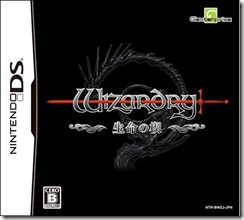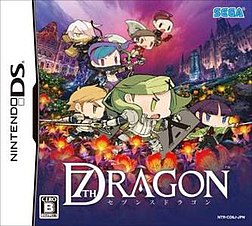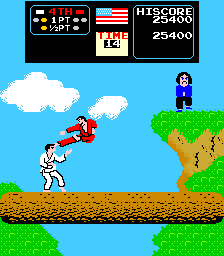
If you've been reading the site for the past two years, you've probably noticed that the articles (at least that ones I've written) have been more adventures games. The change in focus was part of a large scale project to compile all of these articles into a fairly comprehensive book on the genre, focusing largely on the golden age, from approximately 1985-2000. It is (tentatively) called HG101's Guide to Classic Graphic Adventures.
Naturally, it's been in the works for quite a long time. There are also several articles that are completed but not yet posted. The
full index of everything can be found here. It is tentative to change, but everything featured on this list will be in the book. It will also have a number of interviews with developers - the Al Lowe one has already been posted, but more are in the works.
The current projected length is somewhere between 600 and 700 pages. It will be self-published through CreateSpace and will be available for purchase on Amazon, and you should technically be able to special order it through various brick and mortar book stores too. The price is still in fluctuation, but I'm aiming to set it at $25, which I think is a bargain for the absolutely huge amounts of content you'll be getting. I'm in the process of putting together a really cool cover, too.
Initially I wanted just to focus on Sierra, LucasArts, Legend and a few other higher profile titles and series, but the scope found itself wider and wider, to the point where most noteable games are covered. However, I'm still not quite sure what encapsulates "noteable" because I'm sure I'm missing some games that some fans really like. I'm in the final months of the project, but I'm putting this out there - if you'd like to contribute an article for a game not yet covered, please
drop me a line!
The Journeyman Project (series)
Beavis and Butthead in: Virtual Stupidity
Ripley's Believe It or Not! - Riddle of Master Lu
Pepper's Adventures in Time
Return of the Phantom
Ringworld: Revenge of the Patriarch/Return to Ringworld
KGB / Conspiracy
Dragonsphere
Lost Eden
Dragon Lore
Les Manley: Search for the King/Lost in LA (series)
Innocent until Caught/Guilty (series)
The Orion Conspiracy
The Gene Machine
Ween: The Prophecy
Lost in Time
Fascination
Bargon Attack
Chronomaster
Ripper
Fable (the Sir-Tech one, not the Lionhead/Microsoft Xbox one)
Bloodnet
Tass Times in Tonetown
Neuromancer
Altered Destiny
Countdown
Universe
Curse of Enchantia
Duckman
Ace Ventura
This is only a general list - if you've got something you think you want covered, then it's probably good! Keep in mind that I'd like to keep it with in the scope of the "classic" era, again, pre-2000. I also want to keep it to this specific style of games - in other words, to stay away from the Myst clones or Japanese visual novels or interactive fiction. But if you want to write something for a more recent game, too, I'd be down with it, especially if it's an independent game. I had wanted to cover all of the Telltale games, for example, but I cut it down to just Sam & Max and Monkey Island, as well as Strongbad. The Daedalic games, like The Whispered World, also look pretty alright, but if I didn't limit the scope the book would literally be too big to carry.
The reviews needn't be too long. 500 words roughly at minimum, 1000 words at max for a single game, unless there's something really special about it. They do need to fit in the style with the rest of the articles, though. I'll do any necessary editing, but generally they're written in the third person and from a more objective viewpoint. They are also written for a modern adventure gamer, so feel free to criticize the more obnoxious points (unfair deaths, dead ends, arcade sequences, arcane puzzles) but note that these elements are probably a given for many of these games.
The main question you should be answering in an article is, what makes this game relevant? What stands out amongst its peers? Maybe it's the writing or the graphics or the atmosphere, whatever. Maybe there isn't anything that makes it relevant? That's okay too. Why should you play this particular, niche game over a more popular one? As long as your argument is backed up, it's cool. If you read through any of the many articles on the site, you'll probably get an idea of the style and tone they should be written in.
Also, don't be afraid to talk about specific characters, puzzles, situations, or lines of dialogue. Sometimes I find adventure gams reviews to skirt about these elements for fear of spoilers, which I think it silly. By not talking about these you're basically not talking about the game at all, and any criticism comes off as vague. Just, you know, don't talk specifically about the ending or plot twists or anything.
So, what do you get out of this? Well, full credit, obviously. And a free copy of the book, of course, which will approximately work out to be a $25-$30ish value. Any future compensation would depending entirely on how profitable the book is, so I really can't guarantee anything at the moment.
Ideally anything you write should be original, and should include a box shot and a few screenshots at their native resolution in PNG format. If you have an article you wrote for another site and you want it printed in the book, I'll accept it, but please make sure you've obtained the permission of the site it was originally submitted too, because I want to make sure I'm not stepping on their toes. Also note that it may need to be edited to fit in with the standards and tone of the rest of the book.
If you're interested, please
e-mail me with which titles you'd like to cover. Only do this if you're committed to it, though. The deadline for all entries will be December 31, 2010, since I plan to have this ready for early (March-ish) 2011 publication. If you have any questions, just let me know!




































